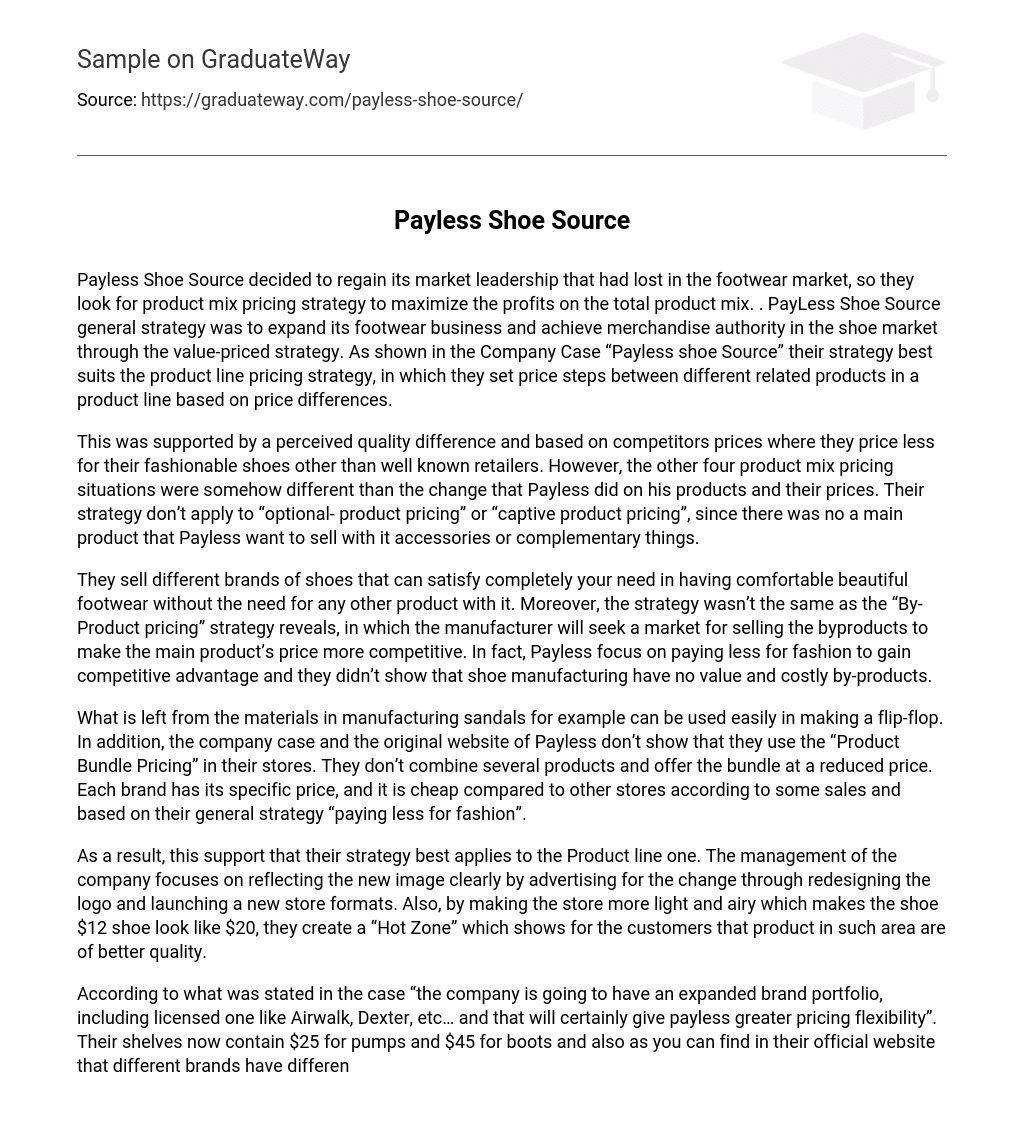Payless Shoe Source sought to reclaim its dominant position in the footwear market by implementing a product mix pricing strategy aimed at maximizing profits across its entire range of products. Their overall strategy was to expand their footwear business and establish themselves as a leading provider of affordable shoes, as demonstrated in the Company Case “Payless Shoe Source.” Their approach aligns well with the product line pricing strategy, which involves setting price differentials between related products within a product line.
This was backed by a perceived discrepancy in quality and was driven by the fact that competitors offer lower prices for their stylish footwear compared to well-known retailers. However, the other four scenarios in the product pricing mix differed from the approach taken by Payless in terms of their products and prices. Their strategy does not fit into “optional product pricing” or “captive product pricing” as Payless does not have a main product that they intend to sell along with accessories or complementary items.
They offer a variety of shoe brands that provide comfortable and stylish footwear without the need for additional products. The strategy they employed differs from the “By-Product pricing” strategy. Instead of selling byproducts to make the main product more competitive, Payless focuses on paying less for fashion to gain a competitive advantage. They also demonstrated that shoe manufacturing has value and does not result in costly by-products.
The leftover materials from manufacturing sandals, for example, can be easily repurposed to make flip-flops. Furthermore, the company case and the original Payless website do not indicate the use of “Product Bundle Pricing” in their stores. They do not combine multiple products and offer a discounted bundle. Each brand has its own price, which is comparatively low compared to other stores, in line with their overarching strategy of “paying less for fashion”.
As a result, the company’s management focuses on reflecting the new image clearly for the Product line one. They support this strategy by advertising the change through logo redesign and launching new store formats. Additionally, by enhancing the store ambiance to become more light and airy, they create a “Hot Zone” where $12 shoes appear to be of higher quality, giving customers the perception that products in that area are better.
According to the information provided in the case, Payless is planning to expand its brand portfolio, which will include licensed brands such as Airwalk and Dexter. This expansion will provide Payless with greater flexibility in pricing. Currently, their shelves offer pumps for $25 and boots for $45. Additionally, their official website states that different brands have varying prices, which are determined by both tangible and intangible quality factors, as well as the reputation of the designer or brand. To emphasize the change in quality, Payless effectively communicates this information through various media channels with the aim of regaining market share.





